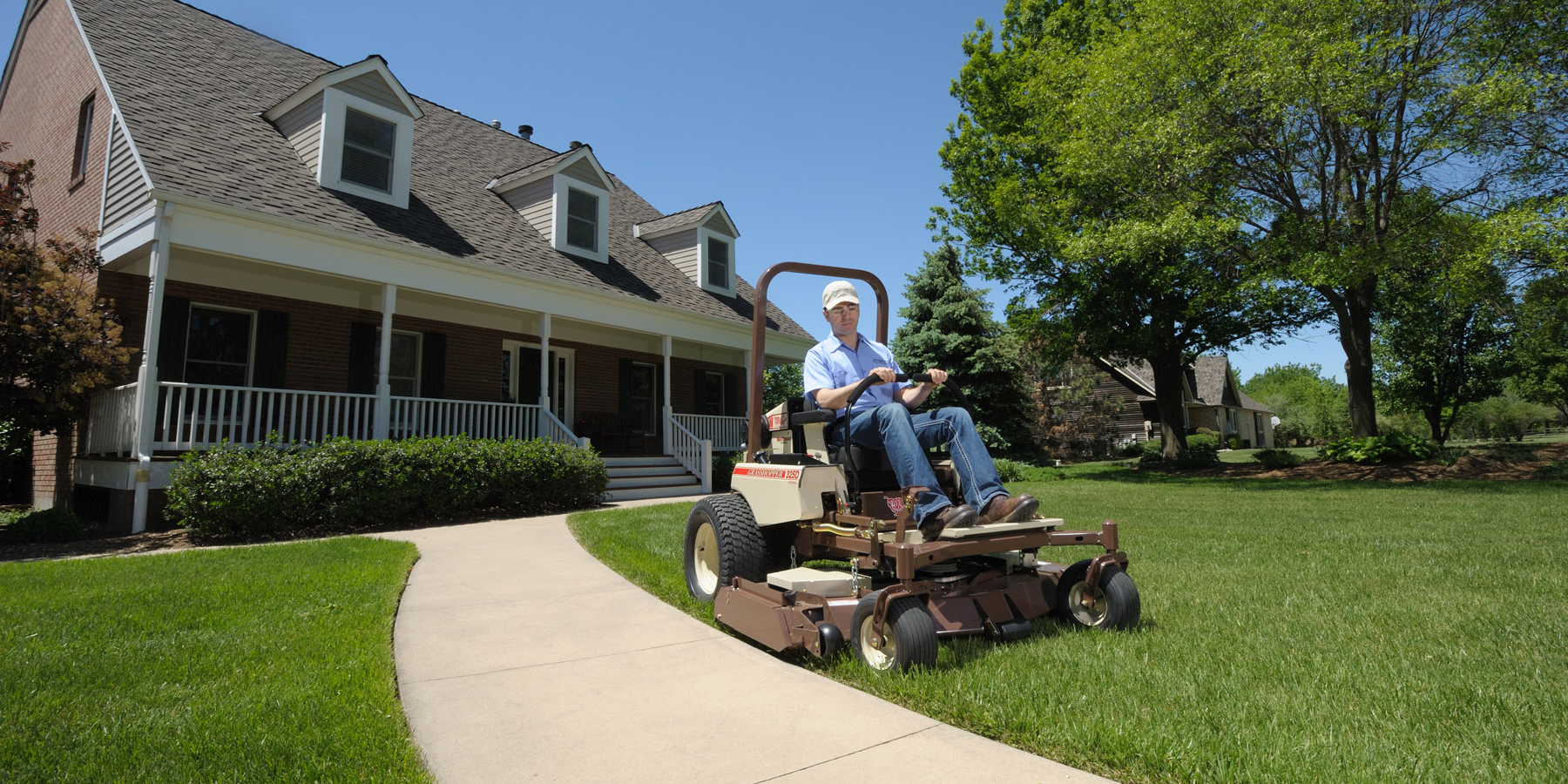Lawn Care Tip of the Month: Mulching tips
Posted on:Jun 17, 2016
This is Part VI of our Lawn Care Tip of the Month blog series. Hello, Summer! Whew...the temps are on the way up in Kansas, but what should we expect from summer in the Plains?
Hello, Summer! Whew...the temps are on the way up in Kansas, but what should we expect from summer in the Plains?
This month's topic is about mulching, and we don't mean that stuff you spread in your planting beds. We're talking about mulching kits, mulching blades and mulching clippings.
The summer months typically bring higher temperatures and less frequent rains, so this is the best time of year to add mulching to your lawn care regimen. And, by incorporating the tips below, you'll get the best results, and the biggest impact, for your lawn during the hot summer months and beyond.

Mower Mulching Kits
Most mower decks are designed to channel clippings and debris to a discharge opening on one side of the mower deck where they are spread and dispersed across the lawn on each mowing pass. To mulch effectively, you have to close this opening while also creating recirculating airflow under the deck to cut and re-cut clippings into small pieces.
Grasshopper cutting decks can be equipped with mulching kits that feature expertly engineered mulching baffles and blades. These Down Discharge Mulching Packages do just what their name implies: create vortical airflow that keeps clippings recirculating up and down under the deck so they are cut and re-cut, then ultimately discharged down into the turf canopy. The result is a beautifully manicured cut that also provides numerous health benefits to your lawn.
Mulching Best Practices
Follow the 1/3 Rule! Mowing at the proper height ensures the clippings will be small enough to disappear into the turf canopy, and that there will be a tall enough turf canopy there to hide them. If you need a refresher on the 1/3 Rule, Read Part IV: Proper Mowing Heights.
Keep the mower blades sharp! The clippings should be cut and re-cut into finer pieces with sharp blades, not bludgeoned to a pulp with dull ones. Since mulching blades re-cut grass clippings more frequently, they need to be sharpened more often. A good rule of thumb is to pay attention to your grass blade tips. If they show signs of browning or tearing, it's time to sharpen your mower blades.
Mulch when it’s dry! Dry clippings mulch better than wet ones. So, if possible, mulch when the lawn is dry, after morning dew and water from irrigating has evaporated. If you do have to mow when it is wet or more moist than usual to stick to the 1/3 Rule, then be sure to clean the underside of the deck to keep clippings and debris from building up.
Hold the fertilizer! When you follow a regular mulch program, the clippings return vital nutrients to the turf in a natural, organic way. This should be the preferred method of fertilizing your lawn. Chemical fertilizers encourage more growth above the soil, which means you’ll be mowing more often and diverting energy from developing a healthier root zone, a one-two combination that can add more stress to your lawn than necessary in the hotter, drier season.
Don’t worry about thatch! Contrary to popular belief, mulching does not contribute to thatch build up. Grass clippings are composed of mostly water and cellulose, so these smaller pieces will decompose quickly. For more information on thatch and proper removal, read Part II: Dethatching.

